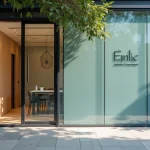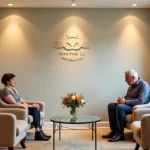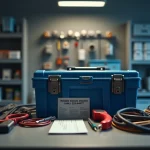As the Porsche 911 is one of the most coveted cars in the world, there’s always a conversation somewhere about how to enhance its performance or customize its features. One topic that stirs up a variety of opinions is whether it is possible to retrofit a classic Porsche 911 with a sequential gearbox for faster shifting. If you’re an enthusiast interested in this possibility, you will find this article valuable.
The Classic Porsche 911 and Its Transmission
The Porsche 911 is a car that commands respect. Introduced in 1963, it quickly became a symbol of sporty elegance. The vehicle’s iconic features, its rear-mounted engine, distinctive silhouette, and impressive performance, have made it a favorite among car enthusiasts.
A lire aussi : How to Choose and Install an Advanced Telematics System for a Volvo XC90 for Better Fleet Management?
Originally, the classic Porsche 911 featured a manual transmission with four or five gears. This type of gearbox is what many purists believe gives the 911 its character and driving satisfaction. When driving a manual, it’s not just about going from point A to point B; it’s about the journey. The physical act of shifting gears, the sound of the engine increasing in RPM, and the feel of the car responding to your inputs is a feeling that many car lovers crave.
However, as technology has advanced, the automotive industry has seen a shift towards automatic transmissions, and Porsche has been at the forefront of this change with their PDK (Porsche Doppelkupplung) transmission.
A découvrir également : Can You Implement a Self-Parking System in a Mini Cooper for Enhanced Urban Convenience?
The Rise of the PDK and DCT Transmissions
Porsche introduced the PDK transmission in the 1980s in their racing cars. The PDK is a type of dual-clutch transmission (DCT), which provides the speed of a sequential gearbox, but with the convenience of an automatic. With a DCT, while one gear is engaged, the next is already selected, ready to be engaged. This allows for near-instantaneous gear changes, which can be a substantial advantage in racing scenarios.
Over time, this technology trickled down to Porsche’s production cars. Many Porsche 911 drivers are now opting for the PDK transmission over the manual because of the speed and convenience it offers. But what if you own a classic 911 and want to experience this quick-shifting technology? That’s where the idea of retrofitting a sequential gearbox comes into play.
Retrofitting a Sequential Gearbox into a Porsche 911
Retrofitting a sequential gearbox into a classic Porsche 911 may seem like a daunting task, but it is possible. The location of the gearbox in the 911, at the rear of the car, makes access fairly straightforward. The main challenge lies in ensuring the gearbox fits well within the car’s existing structure and interfaces correctly with the engine and drivetrain.
The key to a successful retrofit lies in the details. It’s crucial to select a gearbox designed to handle the power and torque of the Porsche’s engine, and one that fits within the available space. It’s not a simple plug-and-play task, though. It involves a significant amount of mechanical work, including modifying the transmission tunnel, adjusting the gear linkage, and potentially updating the car’s electronics.
Keep in mind that while it is technically possible to retrofit a sequential gearbox into a classic Porsche 911, it may not always be the best option. There are several factors to consider, including cost, the car’s originality, and your personal preferences.
Considering the Trade-offs
Retrofitting a sequential gearbox into a classic Porsche 911 will indeed result in faster shifting. However, it’s important to weigh the benefits against the potential downsides.
One of the main considerations is cost. Retrofitting a sequential gearbox is not a cheap task. It involves significant mechanical work and parts, which can run into thousands of dollars. You also have to consider the potential decrease in the car’s value. Originality is highly valued in the classic car market, and modifications like this can significantly affect a vehicle’s resale price.
Another factor to consider is the driving experience. While a sequential gearbox offers faster shifts, it also removes some of the engagement and interaction that come with a manual transmission. If you enjoy the physical act of shifting gears, you might miss the manual gearbox. Posts and replies on various online car enthusiast forums often highlight this divide. Some users express their fondness for the technological advantages of a sequential gearbox, while others prefer the tactile feel of a manual.
In the end, the decision to retrofit a sequential gearbox into a classic Porsche 911 depends largely on your personal preferences and how you intend to use the car. If racing or high-performance driving is your primary goal, a sequential gearbox could be a good fit. However, if you value originality and enjoy the experience of driving a manual, it might be best to stick with the car’s original transmission.
Advantages and Disadvantages of Adding a Sequential Gearbox
Adding a sequential gearbox to a classic Porsche 911 comes with a myriad of advantages and disadvantages. On the plus side, the sequential gearbox is faster and more effective. Known for its lightning-fast gear changes, the sequential gearbox dramatically trumps the manual transmission in terms of speed efficiency. Not only does this result in quicker acceleration, but it also allows for more control during high-speed maneuvers, suiting the needs of racing enthusiasts or those who simply crave increased performance from their vehicle.
Another advantage is that the sequential gearbox offers a seamless and comfortable driving experience. Unlike the manual mode, which requires one to shift gears constantly, the sequential gearbox does all the work. This can be particularly beneficial in heavy traffic situations, long drives, or for those who simply prefer convenience over the traditional stick shift.
However, it’s not all roses. One of the biggest drawbacks is the loss of the traditional driving experience that many Porsche 911 owners love. The manual transmission, with its tactile feel and engagement, is an integral part of the classic Porsche experience. Shifting gears, while not as efficient, provides a raw and immersive feel that many car enthusiasts live for. Moreover, the sound of the engine increasing in RPM, and the car responding to your inputs is an exhilarating experience you won’t get with an automatic transmission.
Additionally, retrofitting a sequential gearbox into a classic Porsche 911 is an expensive venture. From acquiring the gearbox to performing the retrofit, the expenses can quickly rack up. Plus, the potential decrease in the car’s resale value due to modifications is another factor to consider. Originality is a high-selling point in the classic car market, and modifications like this can significantly affect a vehicle’s resale price.
Conclusion: To Retrofit or Not to Retrofit
In the end, the decision to retrofit a sequential gearbox into a classic Porsche 911 boils down to personal preference and how you intend to use the car. If your goal is to improve the performance and efficiency of the car, a sequential gearbox might be worth the investment. However, if you’re a purist who cherishes the traditional driving experience and the classic feel of a manual transmission, sticking to the original gearbox should serve you just fine.
Moreover, the cost and potential decrease in the car’s value should be taken into account before you make a decision. Modifications, like adding a sequential gearbox, might be exciting, but they often come with hefty price tags and could affect the car’s resale value.
It’s important to remember that the Porsche 911, with its rear-mounted engine and elegant silhouette, is a masterpiece in its original state. Whether you choose to modify it or not, what remains unchanged is the car’s iconic status and the joy it brings to its drivers. So before you rush off to make that change, remember to weigh the pros and cons carefully. After all, driving a Porsche—whether it has a manual or a sequential gearbox—is about the journey, not just the destination.












